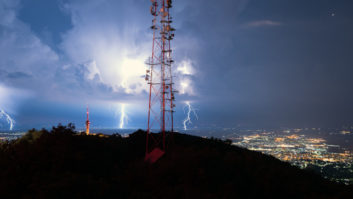Radio World congratulates our friend and contributor Mark Persons, who this fall received the Society of Broadcast Engineering’s John H. Battison Award for Lifetime Achievement!
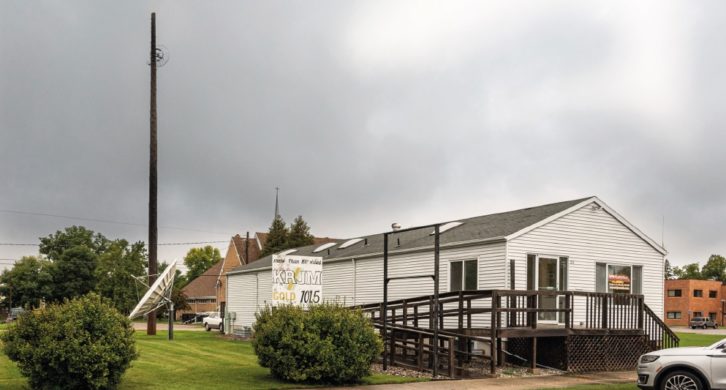
It started at 4:30 a.m. Tuesday, Aug. 19, 2019, with a thunderstorm. KA-BOOM!
People in the small northern Minnesota town of Mahnomen reported hearing the loudest thunder they could remember. Sean Bjerk, KRJM Radio’s manager/morning man, lives three miles away. He was jolted out of bed and left wondering, “What happened?”
A quick check showed the station was silent. Upon entering the studio building, Sean found thick smoke. He grabbed a fire extinguisher and investigated but found no fire.
The power was out. All circuit breakers had tripped. Resetting them brought on only some lights, but no audio.
The thunder concussion had been so great that two studio clocks were knocked off the wall and onto the floor.
The evidence was clear. Lightning had hit a station-owned utility pole with an STL dish.
Fig. 1 shows that lightning chewed through the top of the pole to get to the STL dish and transmission line.
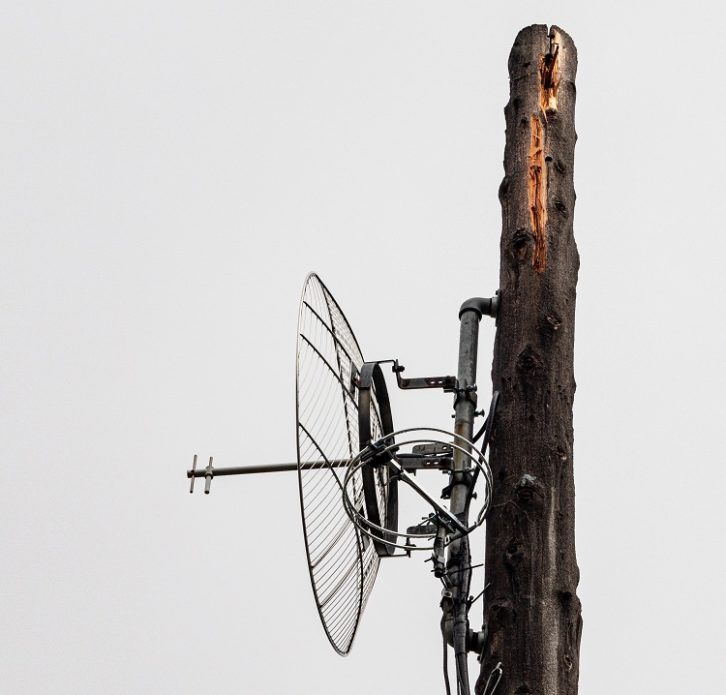
Fig. 2 shows the 1/2 inch Andrew Heliax STL coaxial cable. It was burned as lightning jumped from the cable to the metal siding of the studio building at the point where the line entered.
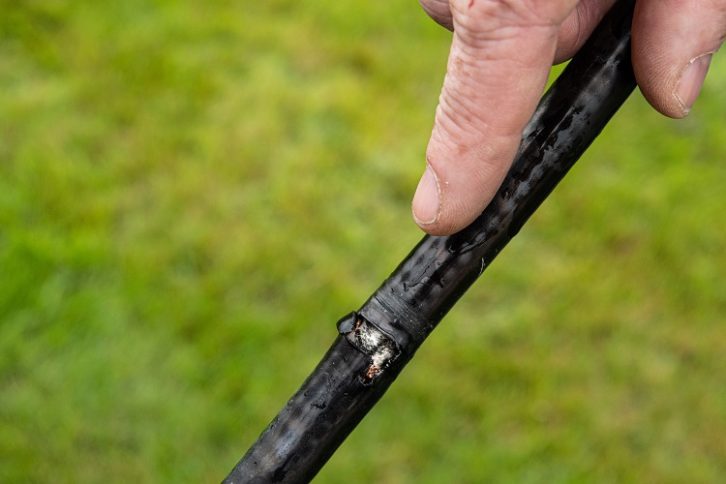
What to do now? Contract engineer Jim Offerdahl was 110 miles away. He set out immediately and on arrival found that virtually every piece of electronic equipment in the studio facility was damaged beyond repair.
The KRJM 101.5 FM 25 kW transmitter site, some 12 miles away, was fine. It just needed audio.
Jim used internet streaming audio from KRJB(FM), Ada, Minn., to restore temporary programming by early afternoon. Audio was from one of the dozen stations of R & J Broadcasting, Inc. in northern Minnesota. The format was country, instead of the oldies that Mahnomen area listeners were accustomed to hearing. KRJB added KRJM commercials and IDs to keep the station legal while continuing to make money.
Damage
Fig. 3 shows the wall outlet where the main equipment rack was plugged in. Totally blackened, it was useless.
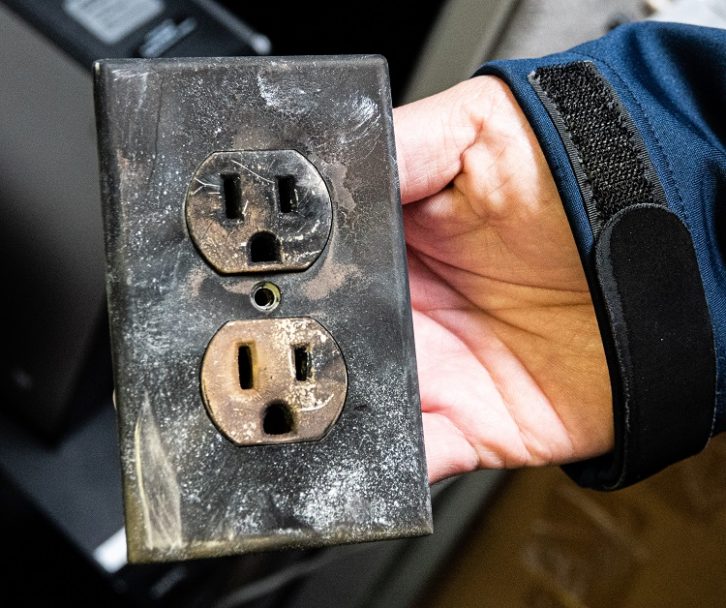
Fig. 4 shows the wall where an electrician cut into a wall to check wiring to the outlet. After seeing the damage, Jim installed a new outlet elsewhere with new wiring.
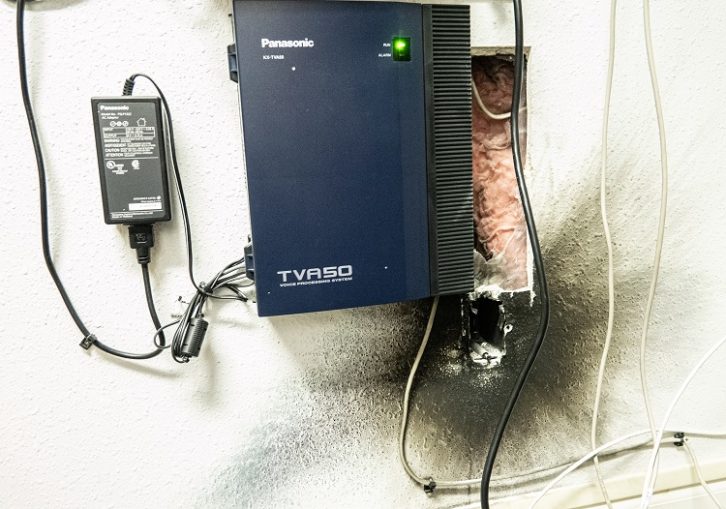
You’ll see a green light on the telephone system. It was lit but the system and its phones were fried as seen in Fig. 5.
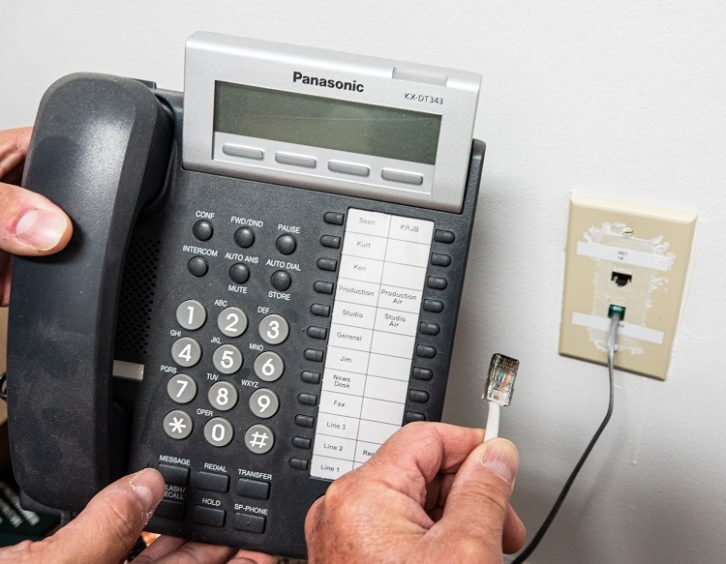
The main computer network switch was history. With that kind of damage, Jim strung new network cables to ensure reliability.
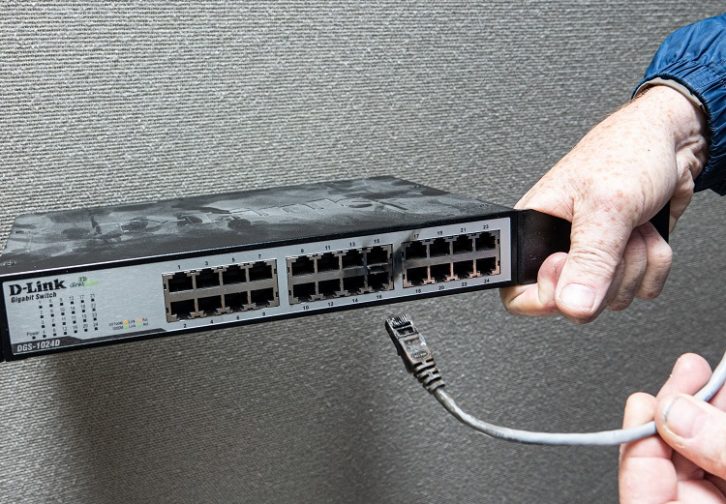
The automation system at KRJM also was toast except for one of the three hard drives, the only component that survived the disaster. This allowed the automation to be rebuilt and the station to be back to normal programming in two days. Part of the delay was to install a new STL dish and feed line, along with an STL transmitter and audio processing.
All of the studios were down so a temporary one needed to be rigged.
The network connector on a studio computer and a black spot on the wall (Fig. 7) are evidence of fire and smoke created by the event.
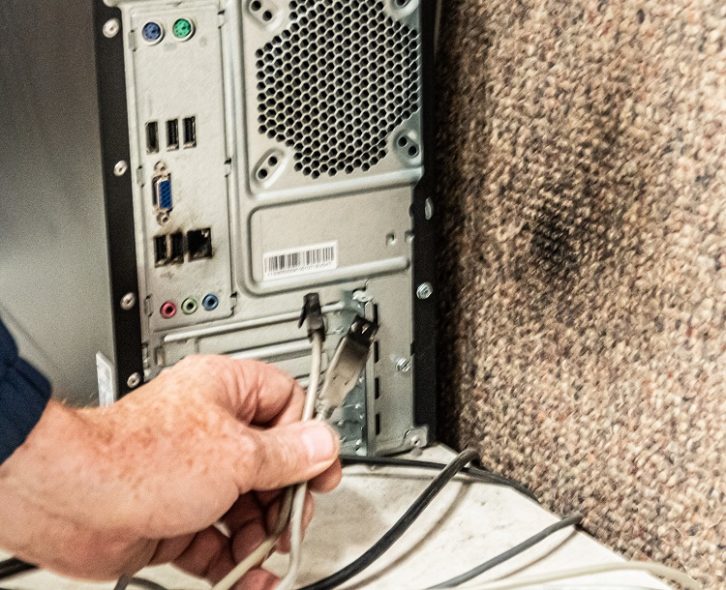
Fig. 8 is where an unterminated computer network cable blackened a wall where lightning was seeking ground.
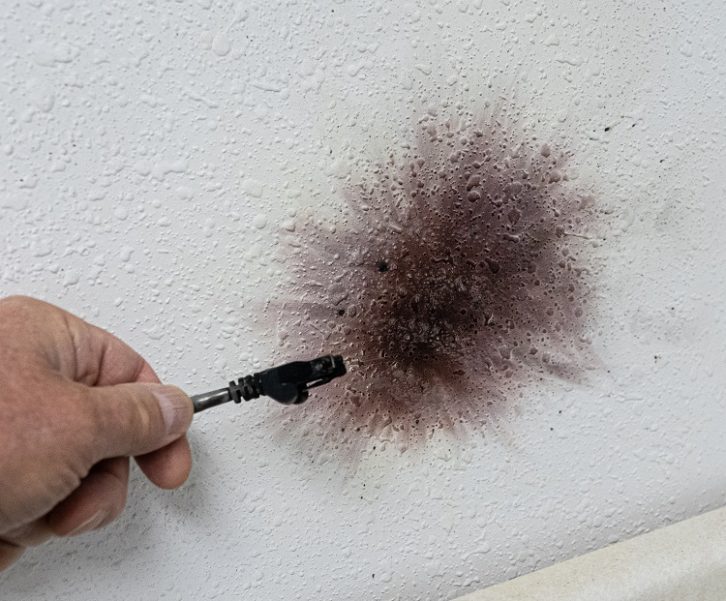
An insurance claims adjuster shook his head saying, “This is the worst damage I have ever seen.” The insurance claim was paid.
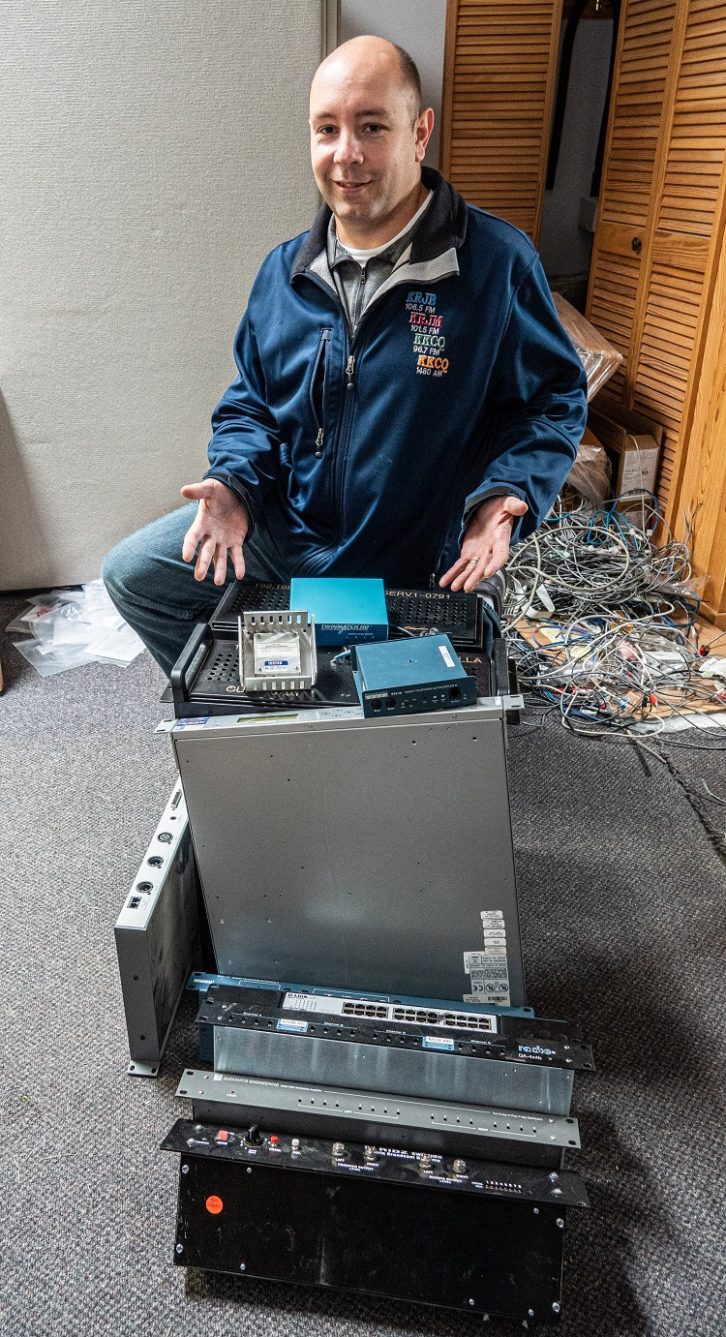
Follow the Lightning
The KRJM studio facility had been constructed in a typical manner and enjoyed 20 years of normal service. There was a ground rod at the base of the STL pole for protection.
You’ll remember I wrote a Radio World article about grounding in the fall of 2017. It discussed how lightning will usually take the easiest path to ground. What we often forget is that ground rods, a standard approach to grounding, are imperfect.
Forensic Analysis
Lightning traveled down the STL pole and ignored the ground rod. Instead, it followed the STL transmission line to an equipment rack in the building.
From there, the lightning found ground through the rack’s 120 VAC power circuit, supplied by the building’s electrical load distribution center (circuit breaker panel). A lot of sensitive equipment was damaged along this path. Think of your broadcast equipment as a “fuse” in a series circuit between the lightning and ground. Poof!
In the final analysis, what was missing was a heavy wire link between the STL pole ground rod and the studio ground. To say it another way, the pole and the studio had two different grounds. They were likely thousands of volts apart during the lightning strike. Almost everything in the middle was damaged.
Lightning protection
The ideal setup is one in which the STL and all other cables enter the building near the electrical power panel. All cable grounds tie to the electrical panel ground and ground rods. It is a “common point” for all facility grounds. This “star ground” has a heavy wire from that point to each studio and equipment rack.
The idea is that studios and racks are “stubs” from the common ground point. Lightning has no reason to travel to a studio if there is no ground at that end to go to. That same thinking applies to transmitter sites, which are even more vulnerable to lightning damage.
Also, I recommend a flexible #12 wire from each piece of equipment to the rack it is mounted in. Don’t be fooled into believing there is a good electrical connection from rack to equipment because they are screwed together. Paint gets in the way of a good electrical connection.
Static Dissipaters
It is a well-known fact that sharp points, directed at the sky, are a good way to dissipate/bleed off static charges, i.e. reduce voltage between the ground and the sky. It happens continuously as storms pass by.
The result is either no lightning strike or less energy in a strike because the voltage is less than it would have been without dissipators.
Static dissipators are typically made of stainless steel to avoid corrosion. The one shown in Fig. 10 is suitable for the wooden pole or any tower under 100 feet. Two dissipaters are even better.
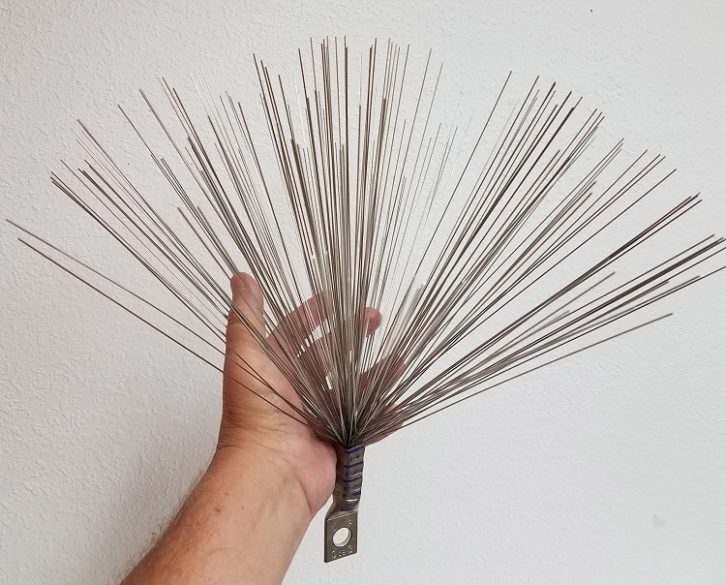
Dissipaters go as high as possible on a tower, building or a wooden pole like the one in this article, and need a ground wire directly connected to a common point ground. No wire is required on a steel tower because steel is an electrical conductor. Learn more at www.nottltd.com/lightning.html.
Summary
It is experiences like this that get the adrenaline flowing in an engineer’s blood. Jim Offedahl will be telling his grandchildren this story someday from the comfort of his rocking chair.
Comment on this or any article. Write to [email protected].
Visit the author’s website at www.mwpersons.com.
